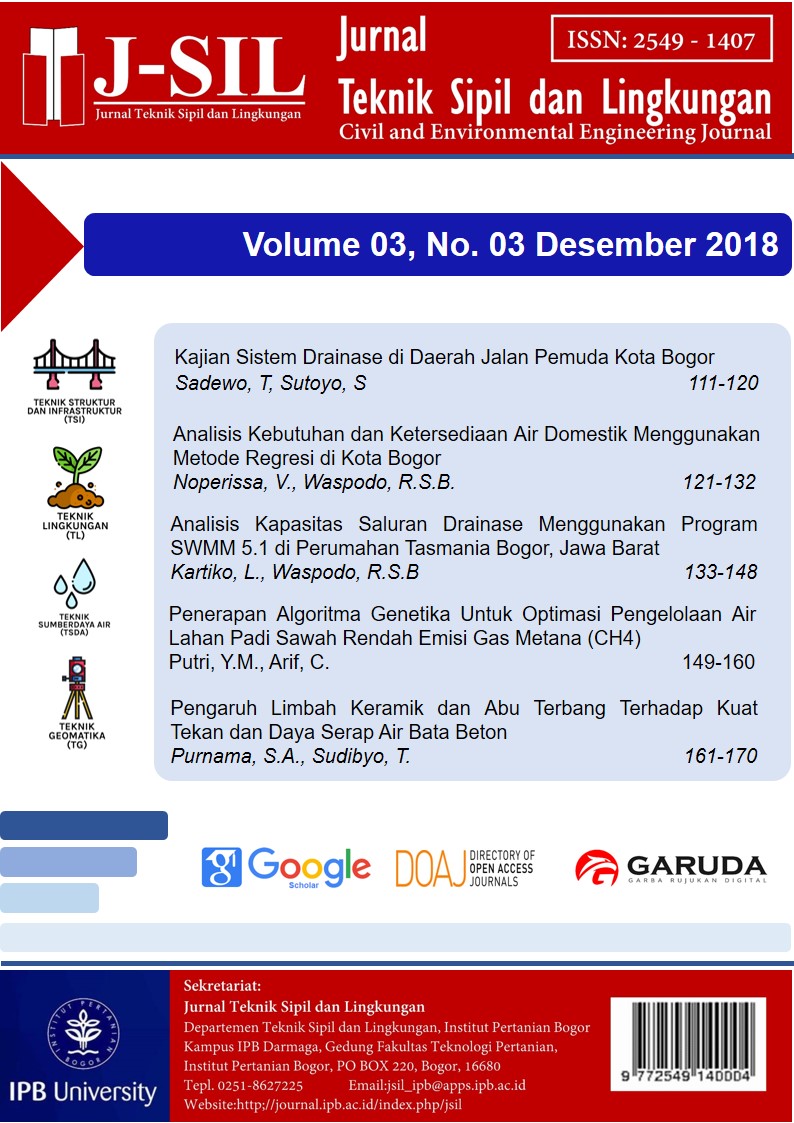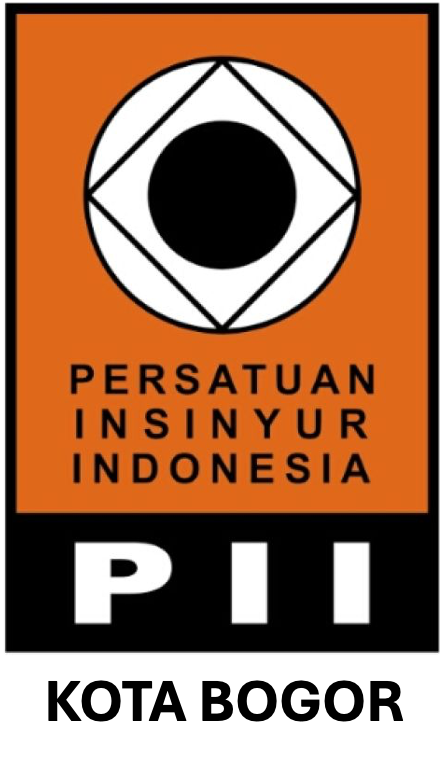Analisis Kebutuhan dan Ketersediaan Air Domestik Menggunakan Metode Regresi di Kota Bogor
Abstract
Abstract : Increasing of population in a region is directly proportional to its development. Large number of populations resulted in the wider construction of residential areas. Construction of residential areas requires a clean water supply to fulfill households water demand. The purpose of this research were to analyze the domestic water demand and water availability in Bogor City, and to analyze the suitability between the domestic water supply and demand in Bogor City. The research was done from February to May 2018. This research needed data of population, hydrogeological map and annual river discharge. The correlation between population to domestic water demand using regression method was showed with equation Y = 19549X + 801520. In 20 years ahead domestic water demand will 80,328,688.57 m3 and total water demand will 125,312,754.2 m3, while total surface water availability will 174,078,720 m3/year. Domestic water availability in Bogor would decrease and would make clean water shortage after 2049 when population reached 1,720,323 persons.
Keyword : domestic, surface water, water demand, water supply.
Downloads
Authors who publish with Jurnal Teknik Sipil dan Lingkungan, JSIL agree to the following terms:
a. Authors retain copyright and grant the journal right of first publication with the work simultaneously licensed under a Creative Commons Attribution License that allows others to share the work with an acknowledgment of the work's authorship and initial publication in this journal.
b. Authors are able to enter into separate, additional contractual arrangements for the non-exclusive distribution of the journal's published version of the work (e.g., post it to an institutional repository or publish it in a book), with an acknowledgment of its initial publication in this journal.
c. Authors are permitted and encouraged to post their work online (e.g., in institutional repositories or on their website) prior to and during the submission process, as it can lead to productive exchanges, as well as earlier and greater citation of published work (See The Effect of Open Access).











